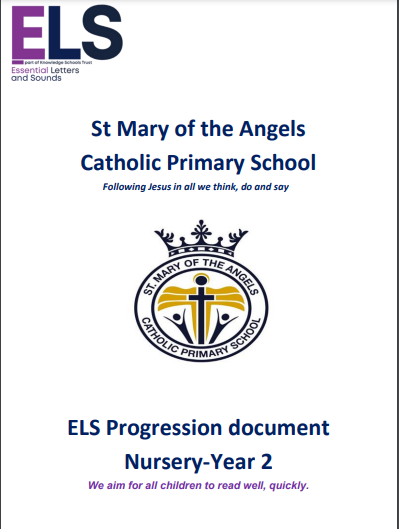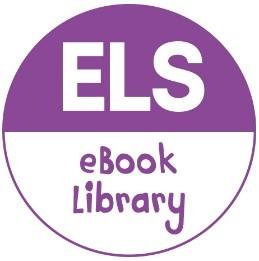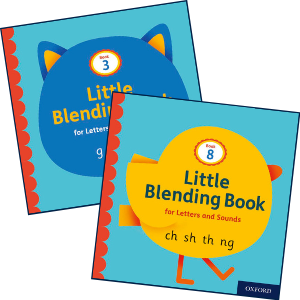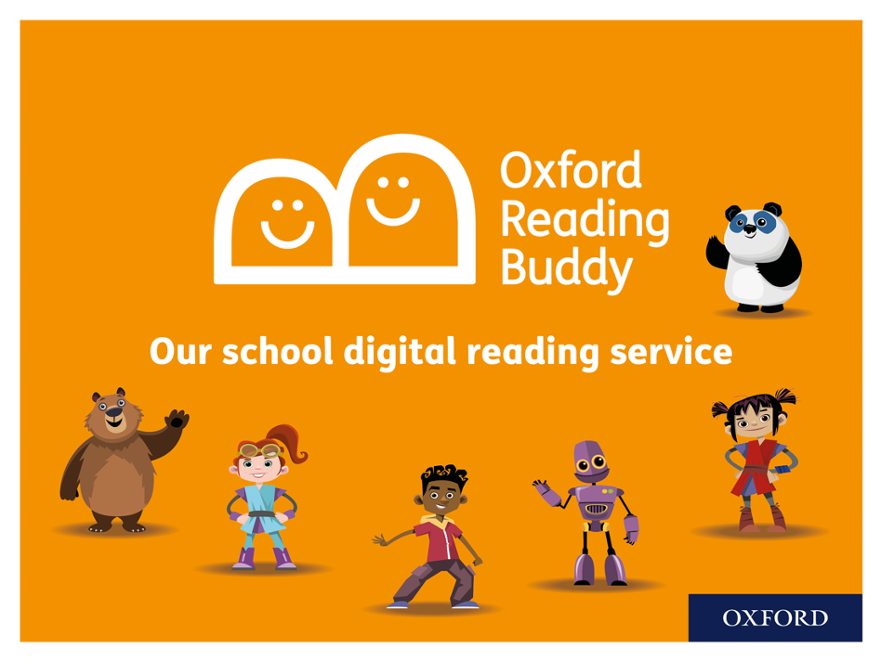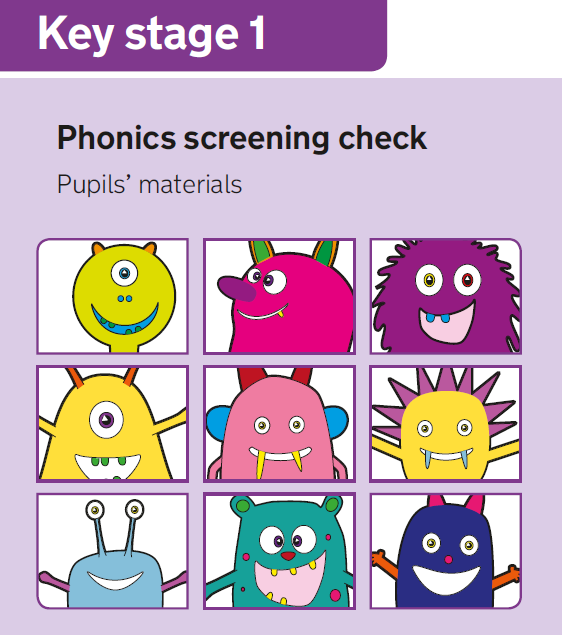Reading
Phonics: Essential Letters and Sounds (ELS)
Essential Letters and Sounds (ELS) is our chosen Phonics programme. The aim of ELS is ‘Getting all children to read well, quickly’. It teaches children to read by identifying the phonemes (the smallest unit of sound) and graphemes (the written version of the sound) within words and using these to read words.Essential Letters and Sounds is a synthetic, systematic phonics programme developed for teachers by teachers.
The principles of ELS are based upon:
- the delivery of whole-class, high-quality first teaching with well-structured daily lesson plans
- the use of consistent terminology by teachers, children and parents
- the use of consistent resources that support effective teaching
- repetition and reinforcement of learning
- regular and manageable assessment to ensure that all children ‘keep up’ rather than ‘catch up’
- the ‘E’ mode (whole school approach/training)
We start by teaching phonics in Nursery, building knowledge and skills in Reception and Key stage 1.
Through the rigorous ELS teaching programme, children will build an immediate understanding of the relationship between the sounds they can hear and say (phonemes) and the written sounds (graphemes).
Nursery Phonics
In Nursery, early language development and exploration of sounds is key to getting the learning behaviours for ELS embedded. We explore Phase 1 phonics which encourages auditory segmenting and blending using musical instruments etc. The key is developing vocabulary and language composition with the early introduction of graphemes (letters) and phonemes (sounds). When appropriate, the practitioners will then introduce the initial sounds and may begin to teach digraphs.
Reception Phonics
Children begin learning Phonics at the very beginning of Reception and it is explicitly taught every day during a dedicated slot on the timetable. Children are given the knowledge and the skills to then apply this independently.
Throughout the day, children will use their growing Phonics knowledge to support them in other areas of the curriculum and will have many opportunities to practise their reading. This includes reading 1:1 with a member of staff, with a partner during paired reading and as a class.
In Reception we revise all letter sounds and learn new digraphs and trigraphs. At this stage the children are also becoming more confident with segmenting and blending sounds to read whole words. In Reception children are also taught words with 4 and 5 sounds in them and alternate ways to read and write different sounds.
Assessments take place every 5 weeks to ensure pupils are retaining their learning and building fluency and automaticity (automatic reading skills) to ensure confident readers.
Year 1 and Year 2 Phonics
Children continue daily Phonics lessons in Year 1 and further if needed through the school to ensure all children become confident, fluent readers.
We follow the ELS progression and sequence. This allows our children to practise their existing phonic knowledge whilst building their understanding of the ‘code’ of our language GPCs (Grapheme Phoneme Correspondence). As a result, our children can tackle any unfamiliar words that they might discover.
Children experience the joy of books and language whilst rapidly acquiring the skills they need to become fluent independent readers and writers. ELS teaches relevant, useful and ambitious vocabulary to support each child’s journey to becoming fluent and independent readers.
Alongside this the children are taught the ‘Harder to Read and Spell words’ – words which do not follow the regular phonetic pattern and are an exception to the phonetic code.
Phonics and reading (Book Talk) activities are taught daily in whole class and small group sessions.
There are also enhanced phonic activities within the indoor and outdoor environment available for the children to explore independently throughout the day.
Phonics provision is also supplemented by a wide range of speaking and listening, English, spelling and grammar activities.
Year 3 - 6 Phonics
If a pupil's decoding skills or reading fluency are not a the expected standard when they leave Key Stage 1 the teaching of synthetic phonics continues in Key Stage 2. This approach ensures that the gaps pupils have in learning are rapidly closed to allow them to become confident, fluent readers to further develop their comprehension skills. Each half term the pupils assessments will be used to plan the next steps in learning to ensure all pupils 'Keep up' and no pupils have to 'Catch up'
We teach children to:
• Decode (read) by identifying each sound within a word and blending them together to read fluently
• Encode (write) by segmenting each sound to write words accurately.
The Structure of an ELS Lesson
The structure of ELS lessons allows children to know what is coming next, what they need to do, and how to achieve success. This makes it easier for children to learn the GPCs we are teaching (the alphabetic code) and how to apply this when reading.
ELS is designed on the principle that children should ‘keep up’ rather than ‘catch up’. Since interventions are delivered within the lesson by the teacher, any child who is struggling with the new knowledge can be immediately targeted with appropriate support. Where further support is required, 1:1 interventions are used where needed. These interventions are short, specific and effective.
Parent Support
| ELS Phonics | |
| Phase 2 Pronunciation | |
| ELS Phonics | |
| Phase 3 Pronunciation | |
| ELS Phonics | |
| Phase 5 Pronunciation |
Phonics: How to pronounce pure sounds | ELS
Learn how to pronounce all 44 phonics sounds, or phonemes, used in the English language.
ELS ebook Library
Your child will be assigned up to two books via Oxford Owl our online reading platform to encourage quick, fluent reading and to develop your child’s reading comprehension skills. Information on how to access Oxford Owl can be found below. Your child’s Oxford Owl username and password is located at the front of their reading record.
Children will also receive two additional Bug Club books (hard copies). Bug Club texts include fiction, comics, plays, poetry and non-fiction. They are rich in vocabulary and help to develop language comprehension through engaging contexts, characters and storylines.
Supporting Reading at Home
Children will only read books that are entirely decodable, this means that they should be able to read these books as they already know the code contained within the book.
We only use pure sounds when decoding words (no ‘uh’ after the sound)
We want children to practise reading their book 4 times across the week working on these skills:
Decode – sounding out and blending to read the word.
Fluency – reading words with less obvious decoding.
Expression – using intonation and expression to bring the text to life!
We must use pure sounds when we are pronouncing the sounds and supporting children in reading words. If we mispronounce these sounds, we will make reading harder for our children.
Please watch the videos below for how to accurately pronounce these sounds.
|
|
Reading in Reception-Info for Parents and Carers School Website | [pdf 453KB] |
|
Quick guide for Parents/carers
Oxford Reading Buddy helps your child to get better at reading. It contains hundreds of books that your child will enjoy, all matched to their reading level. Special ‘Coaching eBooks’ help your child to understand what they read.
Quizzes check how they are doing and send results back to their teacher.
Oxford Reading Buddy can be used on on desktops, tablets and mobiles.
For more information please visit support by clicking here or clicking on the attachments below.
|
|
ORB Quick Guide Letter Y3-6 | [pdf 681KB] |
|
|
|
ORB Information for School Website | [pdf 8MB] |
|
Our Home Reading Scheme at St Mary of the Angels (How is matches to ELS)
Our school uses a whole school reading program called Bug Club.
Bug Club Phonics texts include fiction, comics and non-fiction. The Bug Club range includes plays and poetry. Both series are rich in vocabulary and help to develop language comprehension through engaging contexts, characters and storylines.
At St Mary of the Angels, we also have most texts available as a hard copy so that pupils can access the books either electronically or in a paper version.
More information about Bug Club can be found on the Reading section of the school website.
| Reading Scheme | |
| Bug Club Phonics Chart and Alignment to ELS Sound Progression |
'KEEP UP not CATCH UP'
Please watch this clip to find out more information about Essential Letters and Sounds (ELS).
Phonics Screening Check Year One
What is the Year 1 phonics screening check?
The Year 1 phonics screening check is a short, light-touch assessment to confirm whether individual pupils have learnt phonic decoding to an appropriate standard. It will identify the children who need extra help so they are given support by their school to improve their reading skills. They will then be able to retake the check so that schools can track pupils until they are able to decode.
There are two sections in this 40-word check and it assesses phonics skills and knowledge learned through Reception and Year 1. Your child will read up to four words per page for their teacher and they will probably do the check in one sitting of about 5-10 minutes.
It is a school-based check to make sure that your child receives any additional support promptly, should they need it. It is not a stressful situation as the teacher will be well-equipped to listen and understand your child’s level of skills.
There will be a few practice words first to make sure your child understands the activity.
It checks that your child can:
- Sound out and blend graphemes in order to read simple words.
- Read phonically decodable one-syllable and two-syllable words, e.g. cat, sand, windmill.
- Read a selection of nonsense words which are referred to as pseudo words.
What are nonsense or pseudo words (alien words)?
These are words that are phonically decodable but are not actual words with an associated meaning e.g. brip, snorb. Pseudo words are included in the check specifically to assess whether your child can decode a word using phonics skills and not their memory.
The pseudo words will be shown to your child with a picture of a monster and they will be asked to tell their teacher what sort of monster it is by reading the word. This not only makes the check a bit more fun, but provides the children with a context for the nonsense word which is independent from any existing vocabulary they may have. Crucially, it does not provide any clues, so your child just has to be able to decode it. Children generally find nonsense amusing so they will probably enjoy reading these words.
Is there a pass mark?
The check is not about passing or failing but checking appropriate progress is being made. If children do not reach the required standard, then the teacher will be in touch to discuss plans and offer additional, tailored support to ensure that your child can catch up. Your child will re-sit the check the following summer term.
What happens to the results?
St Mary of the Angels will report your child’s results to you by the end of the summer term as well as to the local authority, but the results won’t be published in a league table as with SATs. If you have any concerns, do talk to your teacher about this in a parents’ meeting or after school.
Do all schools and children have to participate?
All schools and academies in England must take part in the phonics screening check unless they are an independent school. There is a process in place for reviewing children with special educational needs, so if your child’s teacher thinks there are very special reasons related to your child and their needs that make them think the phonics screening check may not be appropriate, they will decide on appropriate action and discuss this with you.
Phonics Screening Week for Year 1 Pupils will take place the week beginning Monday 10th June 2024
Phonics Screening Past Papers
|
|
Phonics-screening-past-paper-2023 | [pdf 260KB] |
|
|
|
Phonics-Screening-Past-Paper-2022 | [pdf 458KB] |
|
|
|
phonics-screening-past-paper-2019 | [pdf 1MB] |
|
Parent/Carer Support
Please click here to gain access to the Oxford Owl Home for Parent Support regarding phonics.
Click here or watch the YouTube link for information regarding the Phonics Screening Test.

